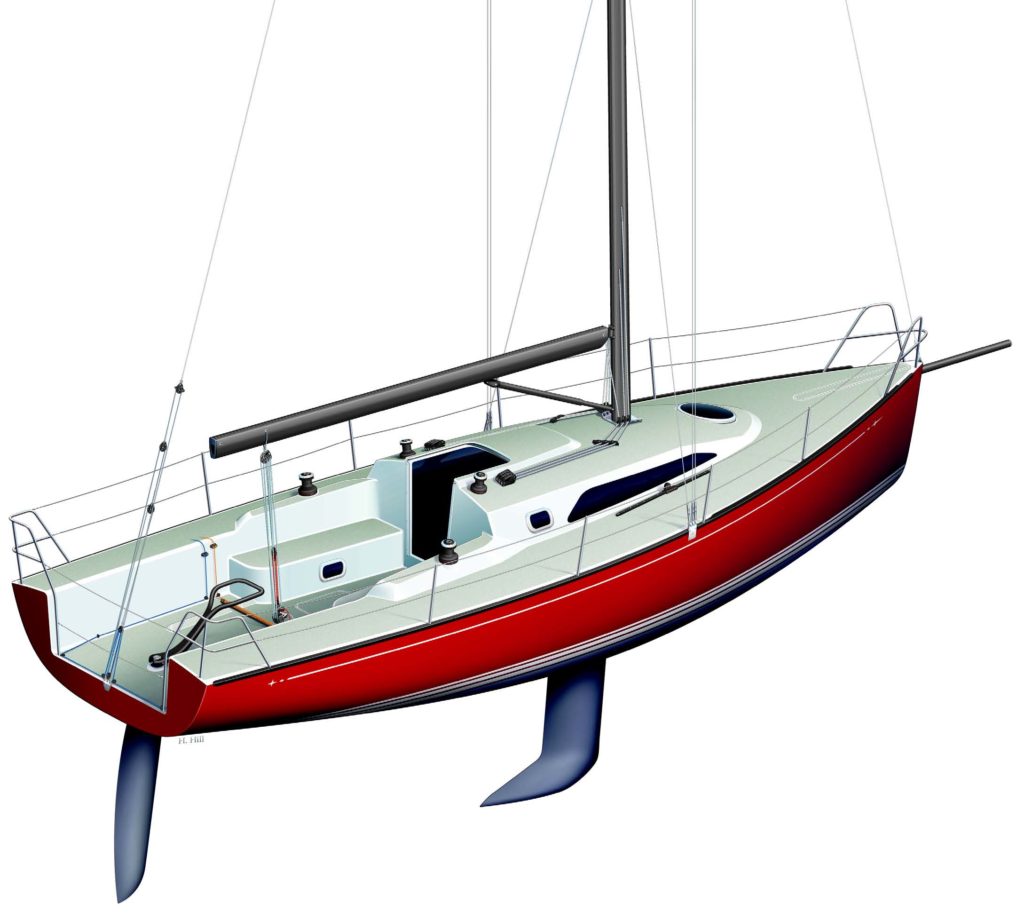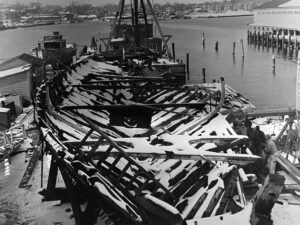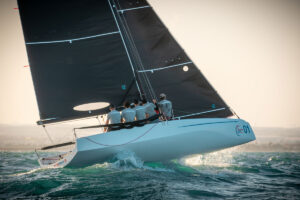
C&C 101
There’s a welcome trend as the world economy re-calibrates to the new realities: production raceboat building has returned to the United States. Melges Performance Boatworks is turning out the 29er (and 29erXX), having bought the rights and molds from Performance Sailcraft, of Canada. The thriving Viper 640 one-design, previously built in England, is now being built by Rondar Raceboats USA, in Peabody, Mass. The VX-One is in production at Edgewater Yachts in Florida, and the first batch of J/70s, we’re told, will come from Bristol, R.I., not from China as originally planned. And in Painesville, Ohio, C&C Yachts is returning to its roots with the launch of its racer-focused C&C 101.
“Under our new ownership, there’s an emphasis on reestablishing the C&C brand,” says Tom McNeil, the builder’s young new designer. McNeil is leading the development of the 101, a down-to-basics 33-footer, and the company’s first true sprit boat. “C&Cs were always known as being great club racers, but over the past few years, emphasis was put on more dual-purpose stuff. This boat takes the C&C Yachts brand back to being more about performance and less about cruising.”
In conceptualizing the 101, says McNeil, the emphasis was on delivering a “fun, reasonably priced” boat that would be attractive to a younger demographic looking to get into recreational racing. That meant it had to be both sporty and inexpensive. Translation: don’t overbuild it, and keep downwind sailing lively with an asymmetric spinnaker.
To prevent such a design from tipping the displacement scale, the boat will not have interior liners or long-term cruising amenities. It is, however, a legitimate weekender: there are four berths, a small galley, and a head, but no doors to the aft cabins or excessive cabinetwork.

Before finalizing the design, says McNeil, they sought input from dealers, who told them their clients primarily wanted two things: an open cockpit and an asymmetric spinnaker. While a sprit protruding into the interior is fine for most sportboats, leaks can be problematic for bigger boats with cushioned V-berths. McNeil’s solution was to mold a trough in the foredeck, putting the sprit on centerline and keeping it out of the interior altogether. The trough will have a removable cover should the pole need to be accessed, and in/out controls will run externally.
To maintain an open cockpit, C&C did away with seat hatches (which also results in sitting headroom in the aft quarter berths). Instead, they moved storage to the cockpit sole, which you can access through a flush hatch.
The 101 will feature a double-spreader carbon rig with a single backstay, masthead spinnaker, and non-overlapping jib. More ambitious owners with distance-racing aspirations would do well to budget for a code zero and heavy-weather jib. The downwind sail acreage is still being refined, says McNeil, as they explore various VPPs, striving for a balance between having enough power to keep the boat moving in light winds and not piling on too much for club racers to handle.
McNeil anticipates the boat’s ideal all-up racing crew weight will be around 1,200 pounds, with five or six crew able to manage the boat around the racecourse. There’s nothing out of the ordinary with the deck layout, says McNeil, as they’re striving to keep it simple. The forward hatch, he notes, is set further aft to accommodate the centerline sprit; a sewer person should appreciate being able to gather the kite belowdecks without having to awkwardly kneel on the V-berth.
The 101’s introductory price, at press time, is $152,000, sans electronics and sails. The first boat should be sailing by early spring, and then bound for Cleveland’s PHRF fleet. www.c-cyachts.com.









